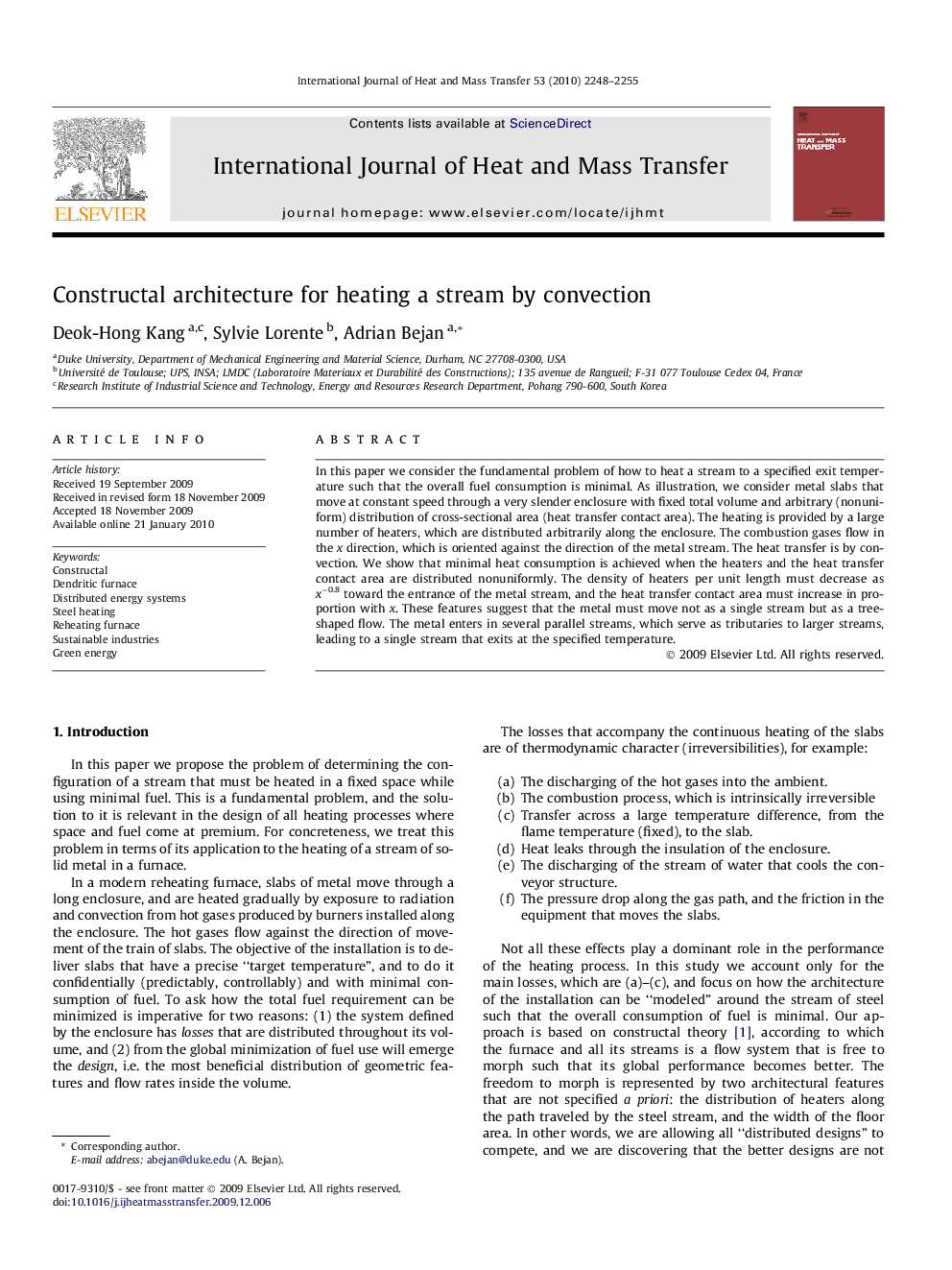| Article ID | Journal | Published Year | Pages | File Type |
|---|---|---|---|---|
| 660189 | International Journal of Heat and Mass Transfer | 2010 | 8 Pages |
In this paper we consider the fundamental problem of how to heat a stream to a specified exit temperature such that the overall fuel consumption is minimal. As illustration, we consider metal slabs that move at constant speed through a very slender enclosure with fixed total volume and arbitrary (nonuniform) distribution of cross-sectional area (heat transfer contact area). The heating is provided by a large number of heaters, which are distributed arbitrarily along the enclosure. The combustion gases flow in the x direction, which is oriented against the direction of the metal stream. The heat transfer is by convection. We show that minimal heat consumption is achieved when the heaters and the heat transfer contact area are distributed nonuniformly. The density of heaters per unit length must decrease as x−0.8 toward the entrance of the metal stream, and the heat transfer contact area must increase in proportion with x. These features suggest that the metal must move not as a single stream but as a tree-shaped flow. The metal enters in several parallel streams, which serve as tributaries to larger streams, leading to a single stream that exits at the specified temperature.
